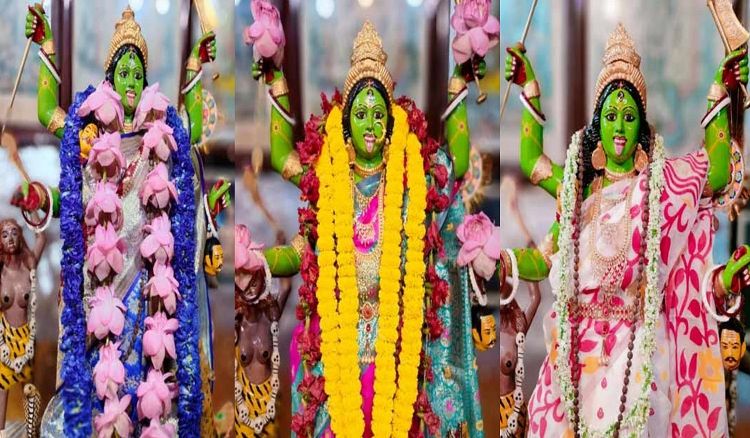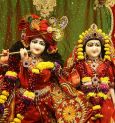In the heart of West Bengal, in the tranquil village of Shreepatipur on the west, a centuries-old tradition known as "Sabuj Kali" Puja is celebrated with fervour and mystique. This unique religious observance is deeply rooted in the beliefs of the devout Vaishnav family of the Adhikari clan, residing in the Haripal Thana of Hooghly.
Sabuj Kali Puja stands apart from conventional Kali Puja celebrations due to its distinctiveness. Here, the revered Mother Goddess, Kali, is adorned in green attire, thus earning her the affectionate title of "Sabuj Kali." The vibrant green hue adds a unique touch to the traditional Kali puja.
One of the most intriguing aspects of this celebration is the observance of Deepanvita Amavasya, which falls on the night of Kartika month. On this auspicious night, devotees gather to light 14 lamps, believing that it will fulfil their wishes. The atmosphere is charged with spiritual energy as people come to seek the blessings of Mother Kali.
The preparations for Sabuj Kali Puja are meticulous and follow an intricate ritual. Special Shodash Upachar (sixteen offerings) are made to the goddess, accompanied by a ceremonial homa. As night falls, the village resonates with the melodious tunes of flutes, played continuously for three hours. It's a tradition that has been upheld for generations.
Another fascinating tradition associated with this puja is the offering of Hilsa fish as a bhog. From 9 p.m. to midnight, the sound of flutes fills the air, and devotees relish the delicious taste of Hilsa fish, making the celebration even more unique.
However, what sets Sabuj Kali Puja apart is its fascinating origin story. Botkrishna Adhikari, the head of the Adhikari family, initially left his village to seek a livelihood outside. After returning, he engaged in agriculture, but the pressure of family led to his marriage to Angurbala Devi. Yet, his heart wasn't in domestic life, and he spent most of his time wandering through the fields, by the river, and even in the cremation grounds.
It is said that one day, during the construction of a cattle shed, he noticed a wandering ascetic wearing a white garment. This chance encounter led him to take sannyasa (renunciation), and he acquired profound knowledge from the ascetic. He delved into intense meditation on the cremation ground and achieved spiritual enlightenment.
Then, following a divine revelation, he established the Kali temple at Kali Mandir and consecrated the deity. The Sabuj Kali Puja is now held in reverence on Ratanti Kali Puja day.
Sabuj Kali Puja doesn't adhere to the usual customs of Kali Puja. It also pays homage to the goddess's beloved jasmine flowers, making it an imperfect but profoundly heartfelt celebration.
Sabuj Kali Puja in Shreepatipur is an extraordinary display of faith, tradition, and spiritual evolution. The unique green-clad Sabuj Kali, the deep-rooted rituals, the flute music, and the offering of Hilsa fish all combine to create a remarkable religious event that continues to intrigue and inspire those who witness it.
 বাংলায় পড়ুন
বাংলায় পড়ুন














